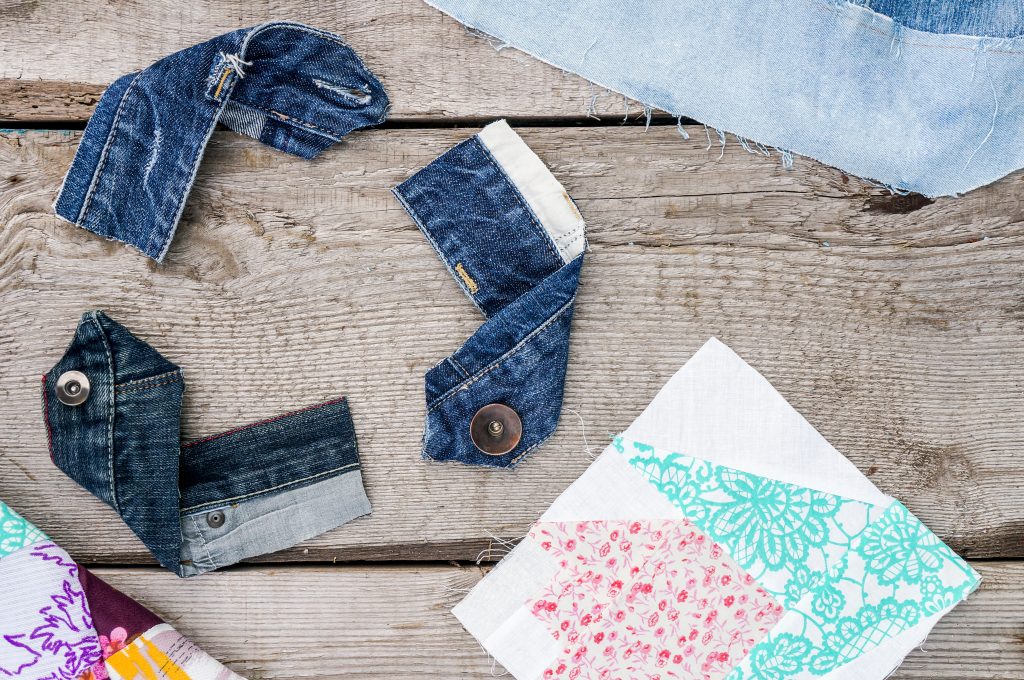DIY|Recycle Your Clothing!
When it comes to garbage and handling it ecologically, clothes are one of those things that can feel difficult. When they are in good shape, it’s easy because there are plenty of charities with thrift stores that will happily pass them on. Or, they can be given to friends or family. But, the more problematic situation is when they aren’t in good shape. After all, holes can only be darned so many times, and stains eventually set. What then?
When those rips in the jeans aren’t fashionably put there, where do they go? When the toe-floss on one flip-flop pops out for good, what becomes of them? When our underwear wears out, we can’t very well pass that to someone new. So, what do we do? The last we looked, there was no “clothes” bin next to the metal and plastic. It’s hard to believe, but the fashion industry has become one of the planet’s most pollutant industries.
Well, we can help to right this situation. Aside from buying our garments conscientiously, we can also dispose of them responsibly.
Reusing What’s Good
First things first, when cleaning out the closet, it’s pertinent to make at least two piles, one for stuff that’s still wearable, free of holes and without serious stains, and one for done and dusted. The clothes that are in good condition should be donated to charity. Then, they can be sold inexpensively, used by someone else, and provide money to a good cause.
Many people shop secondhand as much to reduce their footprint as to save money, so this allows those willing to do that access to quality clothing. And, others simply can’t afford the styles and quality they’d like, so thrift stores give them access to what they’d like. For those into cutting-edge fashion, changing up the wardrobe annually, donating to thrift stores allows the changeover to be a little more environmentally friendly.
That said, it’s in poor taste to donate items to charities that are unusable. That includes soiled, torn, and stained clothing. Clothes should be cleaned before they are donated, and they shouldn’t be donated if no one would wear them, i.e. huge pit stains or sloppy joe remnants down the front. That’s why two piles of clothes is necessary.
Recycling What’s Not
When things just aren’t suitable to be worn by anyone anymore, then it’s time to consider whether or not they can be reused at home. There are lots of crafty projects to upcycle old clothes: pillow covers, shopping bags, rugs, and so on. They can always be cut into rags or mops. Plus, items that are from all-natural materials, like cotton or linen, can be cut up and thrown into the compost bin. They’ll break down with the other organic materials.
In the other cases, there are actually centers where old clothing can go when it’s no longer appropriate for donation or not befitting for upcycling. There is, in fact, a Council for Textile Recycling with a handy online recycling locator that will find the spots within whatever zip code where sullied clothes can be left guiltlessly. American Textile Recycling Services, Goodwill, and World Wear Project are all up for taking old clothing to recycle.
Some clothing manufacturing companies, like Patagonia, will actually take their brand of clothing back to recycle them. Smaller manufacturers are finding ways to take old clothes and upcycle them into new garments. But, those are special cases. In general, it’s probably best to stick with the textile recycling pros.
What Happens Then?
Ultimately, the clothes we recycle aren’t broken back down into thread and yarn to be reassembled into new pants. Textiles aren’t like plastic or glass. But, the fibers from clothes arerepurposed into furniture padding, panel lining, insulation, mattresses, and behind-the-scenes stuff like that. It’s a much better fate than the landfill, and it’s a far better use of the old resources, as well as a good way of avoiding using new resources for those tasks.

